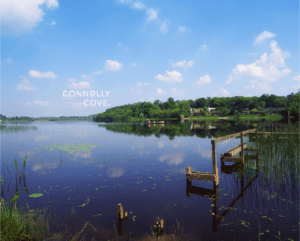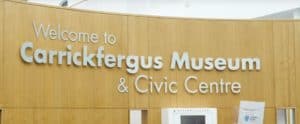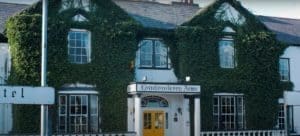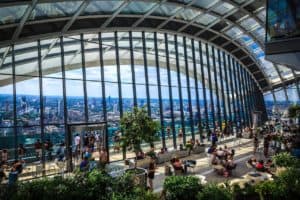The Renaissance Cities of Italy: Uncovering Their Legacy of Culture and Power

Updated On: April 15, 2024 by Aya Radwan
The Renaissance cities of Italy stand as enduring symbols of the transformative power of ideas, art, and ingenuity. Centred amidst the network of city-states that comprised Italy during the 14th to 16th centuries, the Italian Renaissance unfurled as a celebration of humanism and classical reference. This period saw art, architecture, and science flourish, spurred on by the Medici’s patronage in Florence, the Papacy’s ambition in Rome, and the maritime prowess of Venice.

These urban centres became crucibles for innovation, where artists like Leonardo da Vinci and Michelangelo pushed boundaries, and architects like Brunelleschi and Palladio redefined the built environment. The interplay of power and intrigue among these cities also shaped the social and political dynamics underpinning the era’s cultural achievements. Our understanding of the period often focuses on the illustrious art and architecture. Yet, the full richness of the Renaissance lies in its influence on every facet of culture and society.
The Dawning of the Renaissance Cities of Italy
In the tapestry of history, the dawn of the Renaissance marks a profound resurgence of art and intellect. Our cities became the heart of a cultural rebirth, where the pursuit of knowledge was honoured above all.
Humanism and Its Origins
The inception of humanism was perhaps the most defining element of the early Renaissance. We found ourselves deeply influenced by the humanist philosophy, which strongly emphasised individual potential and the importance of human achievements. It shifted from the medieval focus on divine authority to a belief in human reason and evidence found in empirical observations.
This change steered us away from scholasticism that dominated medieval thought, drawing instead from classical texts in Latin and Greek. With humanism came a growing emphasis on subjects such as logic, rhetoric, and natural philosophy—disciplines that encouraged a critical and rational approach to understanding our world.
Rebirth of Classical Antiquity
Humanism catalysed the rebirth of classical antiquity, sparking in us a renewed fascination with the civilizations of Greece and Rome. We avidly re-engaged with their philosophy, art, and literature, which had laid somewhat dormant throughout the Middle Ages. The ancient Greek and Roman texts inspired our scholars, artists, architects, and thinkers, encouraging an intellectual and cultural revolution that began to spread throughout Italy.
We saw this renewed classical spirit manifest in our laws, cradle a rebirth in our visual arts, and underpin a transformation in our approach to theology and philosophy. Our societies began to see themselves not through the prism of religious orthodoxy but through a fresh lens that valued enquiry, observation, and human capacity.
Florence: Cradle of the Renaissance
Florence’s indelible mark on the Renaissance era is profound, with the city’s transformation into a vibrant hub of art and intellectualism largely fuelled by the influential Medici family and their patronage.
The Medici Influence
The Medici family stands at the heart of Florence’s ascent during the Renaissance. As shrewd bankers and wool merchants, their wealth and investment in the arts and science laid the groundwork for an unparalleled cultural blossoming. The Medici’s patronage was not merely a display of wealth but a strategic tool that garnered political and social influence, cementing their legacy in the annals of history.
Patrons like Lorenzo de’ Medici supported the careers of renowned artists such as Michelangelo and Donatello. The family’s influence extended beyond the arts, as they also played a crucial role in advancing science and philosophy, helping to shape a world where knowledge and discovery were highly prized.
The Flourishing of Arts
During this period, the arts experienced a remarkable flowering in Florence. The city’s emphasis on humanism was represented in its art, expressing the human experience with realism and depth previously unseen. Donatello’s innovative work with bronze casting and Michelangelo’s profound sculptural pieces have become symbols of Renaissance art.
Brunelleschi and Ghiberti were also integral to the era, both competing to design the doors of the Florence Baptistery, with Ghiberti’s work later being titled the ‘Gates of Paradise.’ Brunelleschi’s construction of the dome of the Florence Cathedral remains a testament to the ingenuity and courage of Renaissance architects. Florence was also a centre for the wool industry, which saw significant investment and provided the economic backbone for the city’s flourishing culture.
Rome: The Papal Powerhouse

As we explore the Renaissance cities of Italy, Rome stands out as a testament to papal authority and artistic splendour. The city’s transformation under the auspices of the Catholic Church became a magnet for the greatest artists and architects of the period.
St. Peter’s Basilica and the Vatican
St. Peter’s Basilica epitomises the fusion of faith and artistry that characterises Rome’s significance during the Renaissance. Our attention is drawn to the grandeur of its design, conceived by Donato Bramante and completed by a succession of architects, including Michelangelo. The Vatican, home to the Sistine Chapel with its iconic ceiling painted by Michelangelo, remains an enduring symbol of the Catholic Church’s patronage of the arts. The confluence of divine inspiration and human genius is most profoundly felt here.
Rome’s Artistic Zenith
The heart of Rome pulsed with a fervour for innovation, attracting figures like Leonardo da Vinci, Raphael, and Michelangelo. These artists were patronised by great Papal figures, such as Julius II, who recognised the power of art to convey the church’s might. Bramante’s Tempietto marked a return to classical architecture and became a hallmark of Renaissance aesthetics.
Leonardo Bruni and Filippo Brunelleschi’s contributions to humanist thought and architecture resonated through Rome’s cobblestone streets, influencing the city’s culture and aesthetics. Rome’s artistic zenith gave us masterpieces that continue to enchant and inform our understanding of the era.
Venice: The Serene Republic

Venice, often called the Serene Republic, was a beacon of affluence and ingenuity during the Renaissance. This iconic city-state dominated Mediterranean trade and became an unparalleled centre of art and architecture.
Trade and Prosperity
Venice’s trade routes were the lifeblood of its economy. By transporting goods between Europe and Asia, we Venetians reshaped not just our city but commerce across the continent. The affluence generated from this trade enabled the Republic to exert considerable maritime power and foster a regime that was remarkably democratic for its time. Such wealth underpinned our patronage system that bolstered the arts and learning while a significant population thrived under the governance of la Serenissima.
Venetian Art and Architecture
In Venice, art was a form of expression and a display of power and wealth. Through the patronage of influential families and the church, artists like Titian emerged, who left an indelible mark on Renaissance art with their mastery of colour and form. The city’s architecture bore the hallmarks of Venetian opulence, with the famed St. Mark’s Basilica exemplifying the blend of Byzantine and Gothic influences. The prodigious use of grand canals, iconic bridges, and palatial structures throughout the city vividly illustrated the Venetian ethos of magnificence and grandeur.
Social and Political Structures

In the tapestry of the Italian Renaissance, the intricate social and political structures of city-states play a central role. Understanding these systems reveals the essence of power dynamics and social stratification that defined the era.
The Italian City-States
The Renaissance period marked a departure from the medieval feudal system towards city-states’ development. These entities, such as Florence, Venice, and Milan, were self-governed, with political authority often concentrated in the hands of a signoria or ruling family. Unlike the feudalism that pervaded much of Europe, Italian city-states functioned as republics where commerce, trade, and the patronage of the arts flourished under the communes and oligarchic republics.
Structured as communes, these city-states were political organisations representing an alliance of the people revolting against the old feudal order. Nevertheless, these republics evolved over time, and control frequently rested with a small, elite class who managed the state’s affairs.
Conflict and Competition
Within and among the Italian city-states, conflict and competition were constant themes. Rivalries between states like Florence, Siena, Venice, and Genoa were often over territorial expansion, trade routes, or political influence. Such disputes sometimes led to warfare or shifting alliances, further complicating the political landscape.
The competition also spurred remarkable cultural achievements. Each city-state sought to outshine the others through patronage of the arts, leading to an unprecedented outpouring of creativity and intellectual activity. Ours is a heritage rich with the ingenuity spawned by this competitive spirit, which we now recognise as one of the hallmarks of the Renaissance.
Cultural Impact Beyond Art

We recognise that while the Italian Renaissance is often celebrated for its extraordinary visual art, the era’s significance extends far beyond the canvases and frescoes that have come to define it. Literature, science, music, and theatre flourished during this period, profoundly influencing contemporary culture in various facets.
Literature and Science
The world of literature saw a revival of classical learning and values encapsulated by the works of Dante Alighieri and Petrarch. Dante’s The Divine Comedy is an epic poem that continues to be a cornerstone of Italian literature, offering complex allegories and a synthesis of medieval knowledge. Similarly, Petrarch, often called the “Father of Humanism,” utilised his poetry to revive the classical philosophy of humanism, emphasising individuality and human reason.
The domain of science also experienced an upsurge of inquiry and knowledge during the Renaissance. Scientific understanding, particularly astronomy, was revolutionised by figures such as Galileo, whose contributions laid the groundwork for modern scientific thought. Their research encouraged a spirit of discovery and scepticism, crucial to advancing scientific knowledge.
Music and Theatre
Renaissance music took on new complexity and richness, with composers exploring polyphony more deeply than ever. Their music was performed in cathedrals and courts, bringing together the elite and commoners in a shared auditory experience.
Theatre saw the construction of the first purpose-built theatre spaces in Italy, heralding the shift from street performances to more formalised productions. This period laid the groundwork for the operas and plays we still celebrate today, emphasising the grandeur of spectacle and the subtlety of character study.
Influences on Renaissance Architecture

In this section, we explore the profound impact of architectural masterminds and transitional styles that shaped the edifices of Renaissance Italy, marrying classical antiquity with innovative designs.
Brunelleschi’s Innovations
Filippo Brunelleschi, a key figure in Renaissance architecture, is renowned for his development of linear perspective. His work in the Florentine Cathedrals showcases his ability to merge technical skill with Classical form. Notably, the Ospedale degli Innocenti exhibits his mastery of geometric harmony and modular design, which harked back to the mathematical precision revered in antiquity. Brunelleschi’s seminal Dome of Santa Maria del Fiore still stands as a testament to his innovative approach to construction, which influenced countless architects thereafter.
Gothic to Renaissance Transition
The transition from medieval Gothic to the Renaissance style witnessed a shift from vertically oriented designs to balanced, harmonious structures emphasising proportion, as recorded by contemporaries like Giorgio Vasari. This movement toward Renaissance principles was somewhat gradual as architects began to re-evaluate and incorporate classical techniques into their designs, moving away from the soaring spires and intricate façades that characterised the Gothic era.
The art of Paolo Uccello also reflected this shift, as his paintings displayed an increased understanding and use of perspective, a concept that deeply influenced architectural representation during the period. The cultural milieu of Renaissance Italy, which revered the humanistic values of Classical antiquity, was instrumental in this transformation, setting the stage for the modern principles of architecture that are still appreciated today.
Key Figures of the Italian Renaissance

The Italian Renaissance was a blossoming of art and thought that fundamentally altered the Western world. A cadre of extraordinary individuals left an indelible mark on history during this dynamic period.
Artists and Innovators
- Lorenzo Ghiberti (1378-1455): Ghiberti is renowned for creating the bronze doors of the Florence Baptistery, dubbed the “Gates of Paradise”. His work blends Gothic and Renaissance elements, showcasing narrative relief panels that have inspired generations.
- Donatello (c. 1386-1466): A true master of sculpture, Donatello’s innovations included the revival of classical figures, such as his iconic statue of David. His works are notable for their detailed realism and the use of perspective.
- Leonardo da Vinci (1452-1519): Often considered the epitome of the Renaissance man, da Vinci was a polymath whose contributions spanned art, science, and engineering. His masterpieces, like the Mona Lisa and The Last Supper, remain among the most revered artworks ever created.
- Michelangelo Buonarroti (1475-1564): Michelangelo, another versatile genius, gave the world extraordinary works of art, including the Sistine Chapel ceiling and the statue of David, which exemplifies the beauty of human form.
- Raphael Sanzio (1483-1520): Celebrated for his serene and harmonious paintings, Raphael’s frescoes in the Vatican are considered his greatest achievements, and his depiction of classical and Christian subjects was immensely influential.
- Donato Bramante (1444-1514): Bramante is often credited with pioneering the architectural style of the High Renaissance. His design of the Tempietto in Rome set a new standard for classical harmony in architecture.
Philosophers and Patrons
- The Medici Family: This powerful banking dynasty was the paramount patron of the arts during the Renaissance. Their support was instrumental in the careers of numerous artists, including Botticelli and Michelangelo, and their influence extended into the political sphere.
- Marsilio Ficino (1433-1499): Ficino, a scholar, was central to the spread of Renaissance humanism. He founded the Platonic Academy on behalf of Cosimo de’ Medici, translating Plato’s works and thus fermenting the intellectual fervour of the times.
- Tommaso Masaccio (1401-1428): As a pivotal painter, Masaccio is credited with ushering in a new era of perspective and naturalism in art. His fresco of the Holy Trinity in Florence’s Santa Maria Novella is a landmark in the use of perspective.
Through their enduring masterpieces and innovative thoughts, these key figures of the Italian Renaissance cultivated an era of cultural rebirth that resonates with our current days.
Diffusion of Renaissance Culture
Before we explore the intricate ways in which Renaissance culture spread throughout Europe, it is essential to understand the pivotal role that Northern Italy played. Here, a renewed interest in humanist philosophy took root, propelling the cultural movement to areas beyond influencing the course of European history.
Northern Renaissance
The Northern Renaissance was a period of great intellectual activity in Europe north of the Alps from the late 14th century until the early 17th century. Fuelled by the cultural exchange with Italy, this period saw the adaptation of Renaissance ideas to the local cultural context. In regions like France, the Low Countries, and Germany, this phenomenon was characterised by advancements in art and a burgeoning interest in humanism. The dissemination of Italian artistic and cultural techniques was facilitated by travelling artists and scholars who established themselves in courts and cities throughout Northern Italy and further north, where they found patronage among the bourgeois and aristocracy, crucial for the arts.
The spread of the Renaissance was nurtured by the invention of the printing press in the mid-15th century, enabling a wider distribution of humanist literature and ideas. Increased literacy rates and the demand for books in the vernacular propelled the spread of humanist thought across Northern Europe.
Spread Through Europe
The Renaissance did not remain confined to Italy; it moved through Europe with verve, influencing countries and shaping cultural landscapes. This spread was a complex process, often intertwined with other significant movements such as the Protestant Reformation and the Counter-Reformation.
In the Holy Roman Empire, the Renaissance met with the intellectual and religious turmoil Luther and his contemporaries brought about. The resulting blend of artistic innovation and religious reform created a unique local version of Renaissance culture. To the east, contact with the Ottoman Empire brought new influences and the exchange of ideas, further enriching European cultural heritage.
This cultural flowering was not a single, uniform wave but a mosaic where each region, city, and artist played a distinct role in interpreting and integrating Italian motifs into their local milieu. By the conclusion of the 16th century, the results of this cultural transfer were evident across Europe, marking an era that still captivates us centuries later.
Decay and Legacy of the Renaissance

As the Italian Renaissance reached its zenith, internal and external factors signalled its decline. While the era waned, its profound impact on culture, art, and intellectual life laid the foundation for the modern Western world.
End of the Italian Hegemony
The High Renaissance displayed extraordinary artistic and intellectual activity, underpinned by the patronage of powerful families like the Medici and the papacy, particularly under Leo X. However, by the late 16th century, Italy’s influence began to falter. Political power shifted as the Italian states were drawn into larger European conflicts, and resources diminished, affecting the financial support for the arts and scholarship. The shift from a flourishing artistic achievement to a period of decline was inevitable as Italy faced invasions and the centre of power moved to other European countries.
Mining, one of the key industries during the Renaissance that supported the economy and helped fund the arts, also saw a decline. As a result, the once-dominant Italian city-states lost their position as the epicentres of political power and cultural production. Historians like Jacob Burckhardt, Jules Michelet, and Hans Baron have analyzed and debated this transition, describing the move away from medieval values and the rise and fall of Renaissance culture.
Influence on Modern Western Society
The legacy of the Renaissance left an indelible mark on modern Western society. European universities were heavily influenced by Renaissance humanism, shaping curricula that moved away from medieval scholasticism and towards a more well-rounded education. The period’s focus on classical antiquity and human potential inspired generations, contributing to modern sciences and philosophy development.
Art and architecture from the Renaissance continue to draw admiration for their innovation and beauty. Concepts born from the Renaissance regarding individualism, realism, and secularism remain central to Western thought. The Italian cities of the Renaissance tell us a tale of the power of human ingenuity and creativity—a narrative carried forward into our modern age as we continuously seek to build upon the resources and knowledge passed down from this influential epoch.
Frequently Asked Questions
In this section, we address the most pressing inquiries surrounding the Italian Renaissance, a period of unparalleled artistic and cultural bloom intertwined with the time’s complex socio-political dynamics.
What led to the rise in power of Italian city-states during the Renaissance?
The rise in power of Italian city-states was fuelled by their strategic geographic locations, which facilitated trade and cultural exchanges. Prosperous merchant families, such as the Medici of Florence, invested in art and learning, further contributing to the cultural richness that characterised the era.
Why was the Pazzi family in conflict with the Medici?
The Pazzi family conflicted with the Medici because of political and economic rivalries. The Pazzi, seeking to overthrow the Medici’s dominance in Florence, orchestrated an assassination attempt that heightened tensions and led to a broader struggle for power.
Which Italian city-states were the most influential during the Renaissance era?
During the Renaissance, the most influential Italian city-states included Florence, the cradle of Renaissance culture; Venice, a maritime power and hub of commerce and art; and Rome, where the Papacy commissioned grand architectural projects and artworks.
How did the expulsion of the Medici in 1494 affect Renaissance Italy?
The expulsion of the Medici in 1494 led to the establishment of a short-lived republic in Florence, which temporarily altered the political landscape of Italy. Although the Medici would later return, this event underscored the volatility of Italian politics during the Renaissance period.
What key ideas characterise the Italian Renaissance?
Key ideas characterising the Italian Renaissance include a revived interest in Classical antiquity, humanism, which emphasised the potential of individual achievement and worth, and a shift towards empirical observation and experimentation in the sciences.
What is the significance of the Pazzi conspiracy to Italian Renaissance history?
The significance of the Pazzi conspiracy to Italian Renaissance history lies in its illustration of the intense rivalries that shaped the period’s politics. It also reflects the extent to which powerful families were willing to assert their dominance and influence over the city-states.






